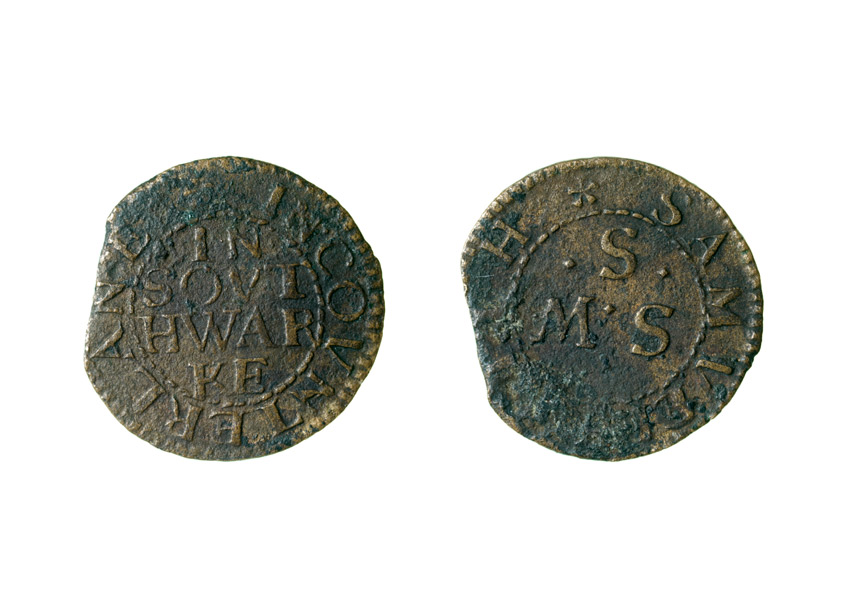Trade tokens were issued in the 17th century, between 1648 and 1673, in response to a lack of low denomination being produced by the crown. To ease the monetary situation, boroughs and cities across the country, began producing tokens to be used within the locality; in London the situation differed, due to the scale of the population, needed to issue private tokens, rather than one accepted city wide.
The Museum of London holds a collections of around 3200 17th century copper alloy trade tokens, as well as six rare leather tokens; the majority of the tokens coming from within the City of London, Southwark and the boroughs many of which were formerly part of Middlesex. We also have Middlesex tokens, as well as a small number from other counties, including Kent and Essex.
Tokens were issued by tradesmen for their business, and would also be accepted by other traders in the locality, as long as they knew the issuer and were assured that they would be able to redeem the value of the token. In a period when people often lived their entire lives within a relatively small area, this system would rely on the trust of the businesses in the neighbourhood. Tradesmen would keep a tray below their counter, where they would collect tokens from other issuers, and then redeem their collected value with the issuer.
Trade tokens were most commonly issued, as farthing, half penny, and penny denominations. Tokens were only issued as farthing tokens until 1656, when half penny tokens began to be brought in to circulation. With the silver half penny of the crown going out of use in 1661, this will have further increased the need for a half penny token, and it was at this time that it became a more common issue than the farthing. Penny tokens, were also issued by traders, most commonly by coffee-houses, the goods they sold being of a higher value than may be common elsewhere. There are also a small number of instances where higher denominations of coinage were issued, including tuppence and sixpence. We have examples of these in the Museum collection, they were all produced for the same issuer, likely to be Sarah Paggan, who also issued a farthing token of a different design.
A variety of information would be represented on the trade tokens; this could include, the place of issue, the issuers name, their trade, the denomination, with the denomination, the farthing often was not marked, it was recognisable by its smaller size, but the half penny and penny tokens often had the denomination written on them, in text or numerically. Most commonly featured, was a triad of initials representing those of the issuer, and their wife (or sometimes son). Read on the token from left to right and the up, the middle initial would be that of the wife.
Throughout the period of issue for the trade tokens, there were often plans by the Crown to produce farthings, it was only in 1672, that the first was finally issued. On the 16th August 1672, a proclamation was made by the crown, ordering the minting of trade tokens to cease, a further proclamation was issued in 1673, but it was only with the issue of a third proclamation in 1674, that the issue of trade tokens, finally ceased. By this time the use of trade tokens had once again, begun to fall, so the latest dates for tokens, are relatively rare.








